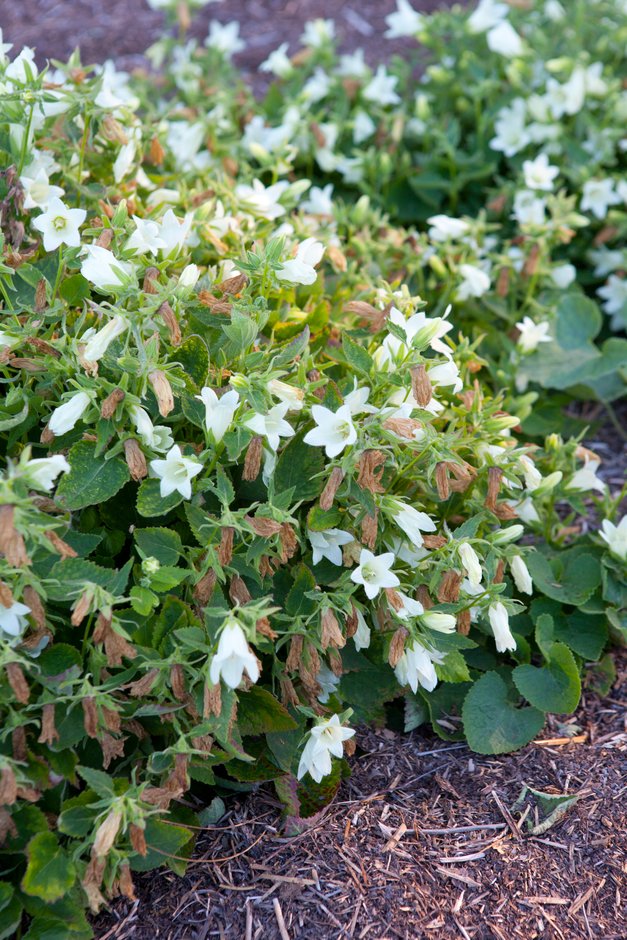Campanula alliariifolia subsp. ochroleuca
yellowish-white bellflower
A slow-spreading, clump-forming perennial to around 40cm tall with rosettes of hairy, heart-shaped or broadly triangular leaves. Narrowly bell-shaped, creamy-white flowers are borne in summer on erect to arching stems
Size
Ultimate height
0.1–0.5 metresTime to ultimate height
2–5 yearsUltimate spread
0.1–0.5 metresGrowing conditions
Moisture
Moist but well–drained, Well–drainedpH
Acid, Alkaline, NeutralColour & scent
| Stem | Flower | Foliage | Fruit | |
| Spring | Green | |||
|---|---|---|---|---|
| Summer | Cream White | Green | ||
| Autumn | Green | |||
| Winter |
Position
- Full sun
- Partial shade
Aspect
South–facing or East–facing
Exposure
Exposed or Sheltered Hardiness
H5Botanical details
- Family
- Campanulaceae
- Native to GB / Ireland
- No
- Foliage
- Deciduous
- Habit
- Bushy
- Genus
Campanula may be annuals, herbaceous or evergreen perennials, with bell or star-shaped, often blue, flowers in late spring or summer
- Name status
Correct
- Plant range
- Caucasus
How to grow
Cultivation
Grow in a fertile, moist but well-drained soil in full sun or partial shade
Propagation
Propagate by seed or take basal cuttings in spring
Suggested planting locations and garden types
- City and courtyard gardens
- Rock garden
- Cottage and informal garden
- Gravel garden
- Low Maintenance
- Flower borders and beds
Pruning
Cut back after flowering
Pests
Diseases
May be susceptible to a rust, powdery mildews and a leaf spot
Get involved
The Royal Horticultural Society is the UK’s leading gardening charity. We aim to enrich everyone’s life through plants, and make the UK a greener and more beautiful place.
